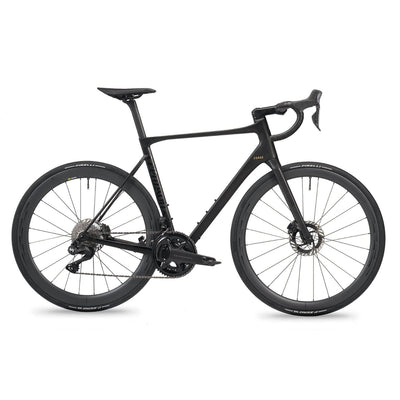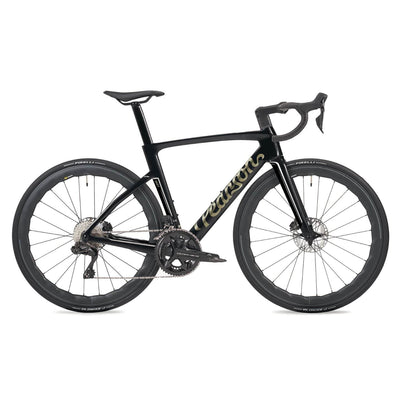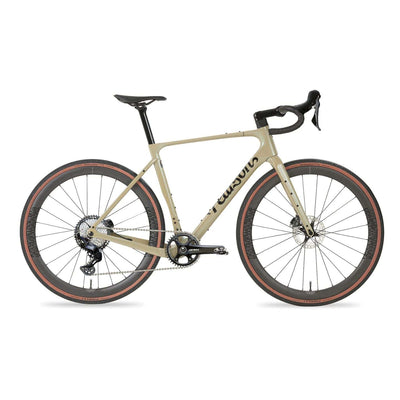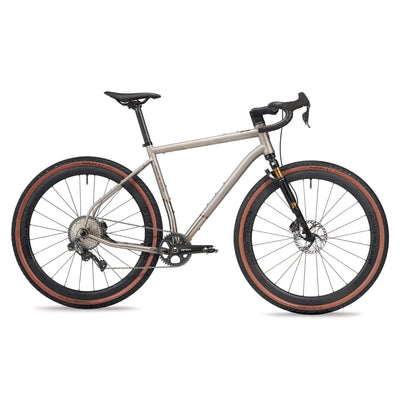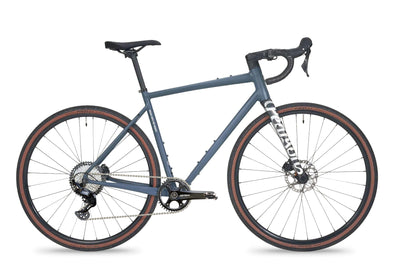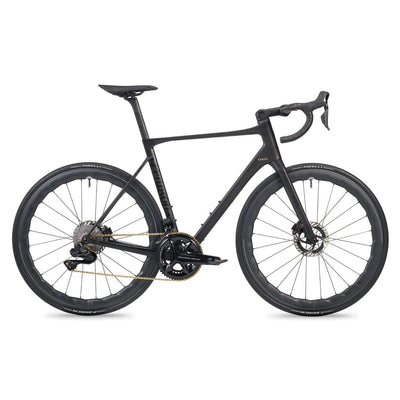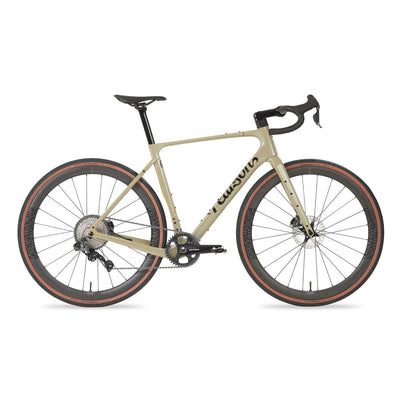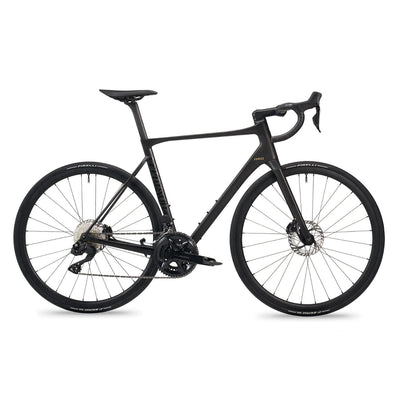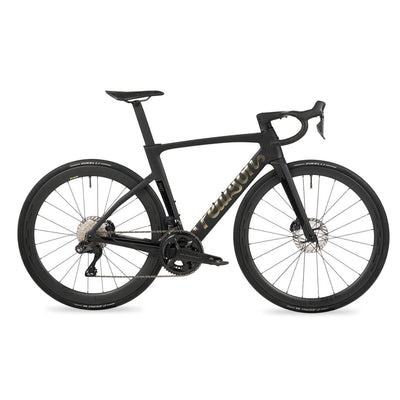Numbers Games
The arrival of the new Pearson Forge has altered our thinking about bike-frame geometry and how numbers are so important to us. (In a good way, obviously.)

Over the past 13 years, Pearson has conducted bike fittings for more than 2,000 riders. Using state-of-the-art technology, we’ve created the optimum set-up for each and every one of them. By precisely calibrating everything from saddle height to bar reach and crank length, we’ve helped them get the most from their riding and minimise risk of injury. In the process, it has changed the way we think about frame design. That’s why, for the past 24 months, we’ve analysed this accumulated data and put it all into one bike. The new Pearson Forge is our most rider-led design to date and the most data-driven frame geometry ever conceived for regular road riders.
You might be wondering what pictures of baseball players and racing cars in this article have to do with cycling, bear with us. Among cyclists, the application of data is both commonplace and the stuff of legend. For regular riders, the influence of data can be summed up in one word: ‘Strava’ (other cycling apps are available). As for the professionals, that extends to two words, ‘Dave Brailsford’, or three if you count the knighthood. The concept Brailsford is most famous for is ‘marginal gains’, the idea that, rather than do one thing 100% better, it was possible to break down all aspects of cycling training and performance and improve them incrementally.

The idea does not belong to Brailsford exclusively. A similar tactic was adopted by another great proponent of data, Clive Woodward, who famously led the England men’s rugby team during their most successful period. It was data analysis that inspired Billy Beane, General Manager of the Oakland Athletics baseball team and immortalised in Michael Lewis’ book, Moneyball: The Art of Winning an Unfair Game. And it was number-crunching that, for a time, helped Arsène Wenger’s Arsenal pull off regular transfer coups in a market dominated by wealthier rivals.
Such pioneers were successful because they were prepared to think differently. Which is precisely how we came to create the new Forge. We’ve been aware for some years that many top-end road bikes are based on frames designed for professional cyclists. In some respects that’s no bad thing, given you’re riding a machine created for the world’s finest riders. The issue, of course, is that average riders don’t ride nearly as much as the pros and tend not to be as fit or as flexible. As a consequence, regular riders often need to tweak their set-ups; with shorter stems, for example, or by increasing handlebar height and setting saddle positions on their limits. So why not anticipate those adjustments in the actual frame geometry?

In the years Brailsford led Britain’s Olympic cyclists, they became the most successful British national team in any sport in history. To describe it as a sea-change barely covers it; in the 96 years of Olympic cycling competition before Brailsford took over, the most gold medals Britain had won at any summer Games was, well, one. (To be fair, we did scoop five of the seven cycling golds available in 1908.)

The new Pearson Forge is also about breaking with tradition, although we have incorporated 160-plus years of industry experience. An exceptional bike for everyday riders, Forge uses a proprietary Pearson frame design. We’ve kept it fast and racy, with precise, nimble handling across all frame sizes. Following extensive data analysis, the fit characteristics have generally resulted in a shorter reach and a taller front-end. To maintain a racing aesthetic, we’ve increased the fork length (thereby shortening overall headtube length) and added a subtle ramp at the front of the top tube.

The success of any dataset can only be measured by its reliability, the extent to which it can be applied elsewhere. In Brailsford’s case he took it on the road, quite literally. Following him out of the velodrome was one Bradley Wiggins, whom Brailsford’s Team Sky piloted to victory in the Tour de France, in 2012. Using the same template that had propelled his Olympic charges to glory, Sky’s monitoring and refining of every aspect Wiggins’s performance was fundamental to his success.
By following our own dataset, the new Pearson Forge has optimised bike fit at a frame level. We call it the O-Series. By carefully analysing the variables around saddle position, handlebar drop and reach, we confidently predict that Forge (available in five sizes) offers fits which cover 85% of riders. (Don’t worry if you fall into the other 15%, we have the alternative S-Series geometry as seen on Pearson Shift). Designed for both recreational riders and aspiring racers, it’s the perfect machine for every type of road riding.
Further afield, the use of data in sport is particularly prevalent when, as with cycling, you need to propel both athlete and vehicle from A to B as quickly as possible. Take elite sailing. In the years when Ben Ainslie was carving up the opposition in solo competition, the BMW Oracle America’s Cup team was under the stewardship of James Spithill. A name not so well known as Ainslie’s but who nonetheless steered his crew to victory in the 33rd edition of the event, in 2010. The data recorded by BMW Oracle is, today, used by elite sailors as a matter of routine. At the time, however, BMW Oracle was the most advanced boat of its kind. Equipped with no fewer than 250 sensors, it monitored everything from hydrodynamics to sail efficiency, as well as individual performances of crew members. Logging 10 measurements for every 10 seconds the boat was in action, the result was a whopping 90m data points, constantly evaluated to improve the boat’s performance in real time.
In the years when Ben Ainslie was carving up the opposition in solo competition, the BMW Oracle America’s Cup team was under the stewardship of James Spithill. A name not so well known as Ainslie’s but who nonetheless steered his crew to victory in the 33rd edition of the event, in 2010. The data recorded by BMW Oracle is, today, used by elite sailors as a matter of routine. At the time, however, BMW Oracle was the most advanced boat of its kind. Equipped with no fewer than 250 sensors, it monitored everything from hydrodynamics to sail efficiency, as well as individual performances of crew members. Logging 10 measurements for every 10 seconds the boat was in action, the result was a whopping 90m data points, constantly evaluated to improve the boat’s performance in real time.
In some ways, data analysis in sport has been with us for centuries. In horse racing, one of the oldest sporting pastimes, what is the study of ‘form’ – a horse’s performances based on conditions, distances etc. – if not a numbers-driven assessment? Today’s trainers may factor in computer tracking, improved conditioning, even the menstrual cycles of broodmares but any guarantee of success remains fiendishly elusive.

What distinguishes data analysis in modern sport is invariably the scale. Motor racing, and F1 in particular, gathers data in vast quantities. As far back as the 1960s, engineers were using the data acquired in wind tunnels to develop a phenomenon known as ‘ground effect’. Specifically, the addition of wings and skirts to the body of a car in order to increase downward force. Or, put another way, inverted lift; taken to its logical conclusion, this meant that, if driven fast enough and you could find an accommodating tunnel, an F1 car had the potential to be driven upside down.
Bordering on science fiction, ground effect was eventually outlawed, in 1982, only returning to the F1 fold last year. In modern cars, there is barely any part of the vehicle for which data is not analysed; tyres, brakes, steering systems, the lot. Not unlike cycling, in fact, except that when an F1 car hurtles down the straight at more than 200mph, the 300-or-so sensors built into its body produce more than 1.5 terabytes (1,500GB) of data per race, all subsequently pored over to fine-tune everything from the design of the driver’s helmet to future race strategy.

When it comes to balancing the variables faced by cyclists, the new Pearson Forge applies data with just as much rigour. It won’t necessarily get you from 0-60 quite as quickly as Lewis Hamilton, but it will guarantee the most optimised frame geometry available, ensuring you get the very most from every ride.
Read next - Firing Up The Forge >

